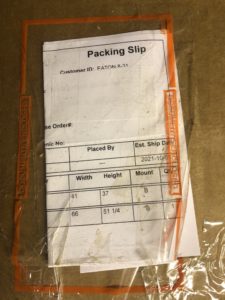A Smooth Blind Installation


“I thought all my blinds were in!”
This is, unfortunately, an all-too-frequent but avoidable situation for customers.
When you order your custom treatments through a designer or dedicated window treatment retailer, the product will generally arrive with the installer. No problem there. But it’s a different story with box stores. Typically, the store has the product drop-shipped to you, the end-user. On receipt, you notify the store-provided sub-contractor who schedules the installation. Simple enough, right?
Well, it should be. Often, the store associate forgets to make this clear to the customer who will then call the store asking for an install date. Of course, the store has nothing to do with scheduling. It may take some time to speak to a live human being and then it might not be a person who knows how to direct you. Many customers later complain to the sub-contractor that they have called numerous times and can’t get through. In fact, they have been calling the store but the sub receives the ire and abuse.
In another scenario, the customer has ordered more than one product type meaning they should expect multiple shipments. Or, one shipment comprises multiple packages and the customer does not verify this. Again, the associate may not have explained these possibilities to the customer.
So, after receiving something, the customer calls to schedule and when asked if the entire order is in, they assure the sub-contractor it is. The installer then arrives to find an incomplete order which necessitates a second visit.
No one is happy about this!
What to do? - Be proactive!
Don’t rely on your sales associate.
When boxes arrive:
- Look at the shipping label for information like ‘1 of 2’ or ‘3 of 6’ (circled in photo). The second number tells you how many boxes to expect in this shipment, but remember that there may be other shipments still en route.
- Remove the packing slip from the clear plastic envelope on one of the boxes. Be patient and go through it line by line. There will be a lot of information including which products (‘tagged’ by room name) are in the shipment. Repeat for each shipment.
- Do a physical count and compare the number of blinds to what the box store receipt indicates for your order. It’s best to leave the blinds or shades in their original boxes so nothing is misplaced. Only call for installation when the entire order has arrived.
